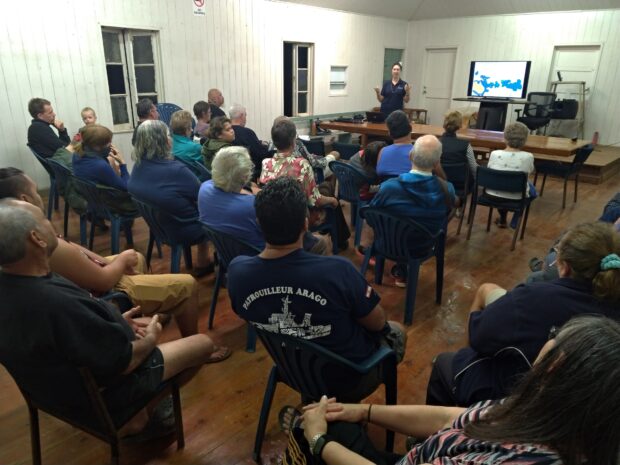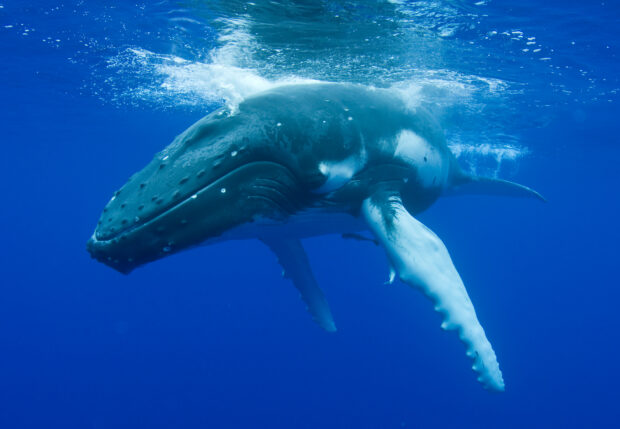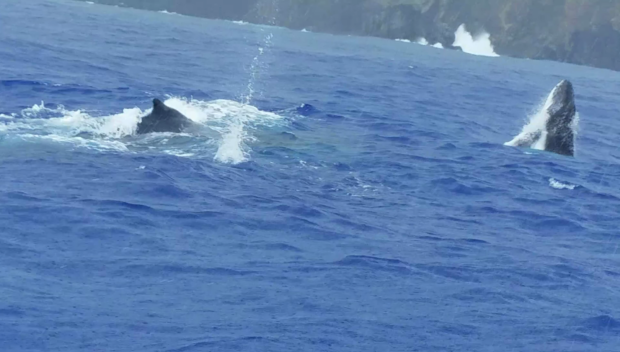The Blue Belt Programme has been working with Conservation International to deliver professional training to support environmentally-friendly whale watching within the Pitcairn Islands Marine Protected Area (MPA).
Implementing the whale watching code of conduct
The Pitcairn Islands designated an MPA covering 830,000 km2 in 2016 to protect their pristine and unique marine environment. The MPA is an important area for humpback whales who are regular visitors from June to November. The local community in the Pitcairn Islands is keen to develop whale watching as an eco-tourism activity but wants to do this is a way that will not cause disturbance to the whales. The Blue Belt Programme worked with the Government of the Pitcairn Islands to develop a code of conduct for whale watching, which has now been published on the Pitcairn Islands Tourism website. Training was required for the local community to effectively implement the code of conduct.

Training and education
The Blue Belt Programme supported experts Olive Andrews from Conservation International and Ben Parangi from Whales Alive, to visit the Pitcairn Islands in July this year to carry out the training. Olive is the Marine Programme Manager for New Zealand and the Pacific Islands and has developed and delivered whale watching operator training in 10 countries around the Pacific Ocean. Ben has expertise in assisting whale watching operators to develop tailored education programmes.

Local support
During their four day visit, Olive and Ben gave a public presentation, which was attended by nearly all of the 40 island residents. They talked about whale biology and behaviour and current research on humpback whales in the Pacific region in context of marine migratory species management in large scale marine protected areas. They also held a more detailed meeting with potential whale watching operators. This highlighted best practice from other islands in the Pacific Ocean and provided practical guidance on how to approach whales and how to identify when whales are displaying disturbance behaviour. The local children helped to display a life-sized whale calf and were given a pack of education materials for their school.

The training received really positive feedback from everyone. The local community was delighted to learn how to interpret the whale behaviours they observe around the Pitcairn Islands and are now very keen to contribute to future whale research. Olive and Ben provided some recommendations to help boat and land-based whale watching in the Pitcairn Islands develop into a high quality, professional eco-tourism activity. This will provide economic benefit to the local community whilst ensuring that the pristine marine environment is not damaged. They also recommended ways in which whale observations from the operators can feed into regional research projects to help conservation of the species throughout the wider Pacific region.